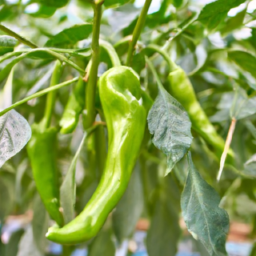From Heat to Harmony: The Pepper Revolution and Culinary Evolution
In the evolving landscape of agricultural practices and culinary trends, the cultivation and consumption of peppers, specifically jalapenos and other chili varieties, have experienced significant transformations that reflect both technological advancements and changing consumer tastes.

A notable shift highlighted in a recent online discussion revolves around large-scale agricultural producers breeding peppers towards a “low heat, low variance” standard, deviating from the traditional “high variance” standard that yielded spicier jalapenos. This move towards consistency in heat levels is beneficial for mass food production, allowing producers to regulate capsaicin content more precisely. This industrial approach emphasizes factors such as shape, size, and color over heat levels, enabling efficient cultivation techniques like drip irrigation.
The decentralization of spiciness from the pepper itself to later stages of production underscores the changing dynamics of the industry, with peppers now optimized for appearance rather than heat. This shift is considered advantageous for widespread food manufacturing but has sparked debates among consumers about the disempowerment of the jalapeno and other chili varieties.
Moreover, the conversation delves into the broader transformation of culinary preferences, citing examples like the resurgence of brussels sprouts and other vegetables due to genetic modifications and innovative preparation methods. The adoption of alternative cooking techniques, such as roasting and sautéing, has elevated once-dismissed vegetables to culinary popularity, showcasing the impact of food preparation on taste perception.
The discussion also touches upon the revitalization of fast food ingredients and the influence of consumer demand on product quality. Improved supply chains, food science innovations, and innovative preparation methods have contributed to the enhanced flavor profile of fast food offerings, resonating with evolving consumer preferences for higher-quality ingredients.
Furthermore, personal anecdotes and cultural perspectives shared within the discourse shed light on the historical context of cooking practices, gender roles, and regional culinary traditions. The dialogue underscores the intersection of societal norms, technological progress, and individual preferences in shaping the modern culinary landscape.
Overall, the conversation encapsulates the multifaceted evolution of agricultural practices, culinary trends, and consumer preferences in the context of peppers and other food products. The interplay of genetic modifications, industrial processes, cooking methods, and cultural influences underscores the dynamic nature of the food industry and the diverse factors that influence our relationship with food.
Disclaimer: Don’t take anything on this website seriously. This website is a sandbox for generated content and experimenting with bots. Content may contain errors and untruths.
Author Eliza Ng
LastMod 2024-02-27